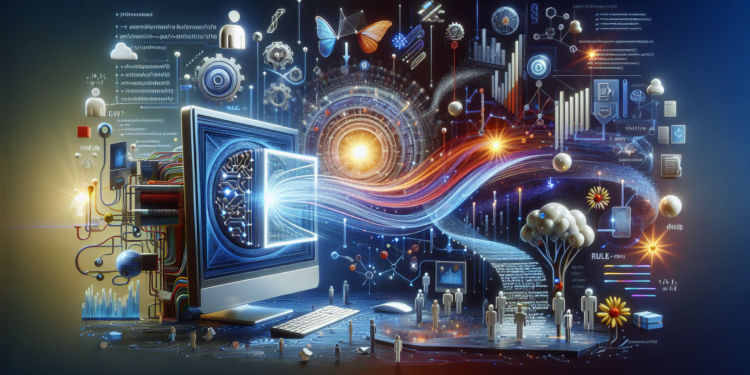Rule-Based Learning is established as a foundational pillar within the realm of artificial intelligence (AI), amalgamating the power of machine learning with the comprehensibility of symbolic rules. Immersed in a constantly evolving digital era, this methodology stands out for its ability to encode expert knowledge and automate decision-making, translating into practical applications that span a wide spectrum of complexities and domains.
Technical Advances in Rule-Based Learning
Over the decades, rule-based learning has evolved from expert systems, through inductive rule learning, to hybrid algorithms that incorporate neural networks. Rule sets generated by systems like RIPPER or C4.5 have enabled the transformation of unstructured data into clear and executable sets of instructions.
Currently, the convergence of explainable AI (XAI) with rule-based learning has given rise to models like DeepRED (Rule Extraction from Deep Neural Networks), which unveil the underlying logic in deep neural networks through symbolic rules, allowing experts to clearly delineate the reasoning behind automated decisions. This approach enables advanced interpretability, addressing one of the most significant criticisms of AI models—their opacity.
Emerging Practical Applications
Rule-based learning has found its compass in critical areas such as medicine, where precision and interpretability are vital. In this field, the analysis of medical data through clear rules facilitates the identification of patterns leading to more accurate diagnoses and personalized treatments. A case study is the Mycin system, designed to diagnose bacterial diseases and prescribe antibiotics. Mycin was notable for incorporating an updatable knowledge base, adjusting its rules as medical understanding evolved.
In the financial sector, rule-based learning enables fraud detection through the identification of atypical transactions. The method’s precision lies in the application of dynamic rules that learn and evolve with consumer behavior and the tactics of fraudsters.
Comparisons and Projections
When comparing traditional rule-based systems with deep learning models, while the latter have superior predictive capabilities in certain contexts, the simplicity and transparency of rules favor their acceptance in environments where understanding the decisions is critical.
Looking to the future, rule-based AI positions itself to play a key role in the development of brain-machine interfaces, where explicit rules may facilitate communication between biological and digital mechanisms. In addition, there’s the potential to incorporate causal reasoning, allowing systems to generate not only correlations but also extended deductions about the cause and effect of the phenomena studied, opening the doors to an unprecedented degree of artificial intelligence.
Innovations and Challenges on the Horizon
The integration of rule-based learning with reinforcement learning is spawning a new class of autonomous systems that can formulate, test, and modify behavior rules in real time in dynamic environments. A prominent example of this integration is the agents in video games, adapting their play strategies to player actions.
Challenges inherent to rule-based learning include the risk of overgeneralization and the difficulty of handling conflicting rules. However, advances in multitask learning and hybrid AI systems are paving the way for a new generation of algorithms that balance precision and comprehensibility.
The surge of natural language processing (NLP) has elevated rule-based learning to new heights. Models like BERT and GPT-3 are exploring ways to integrate semantic rules to enhance the coherence and utility of text generation, promising to revolutionize fields like automatic code generation and human-computer interaction.
Conclusion
Rule-based learning, far from being a remnant of primitive AI, continues to provide a robust and insightful framework for understanding and automating decision-making. The technical sophistication of its applications and its role in explaining and rendering complex models legible ensure its position as a fundamental element in the constellation of modern artificial intelligence approaches. Experts face the challenge of balancing the elegance of the rules with the maelstrom of data and increasing complexity, in a continual effort to unravel the enigmas of intelligence and its manifestation through technology.






















